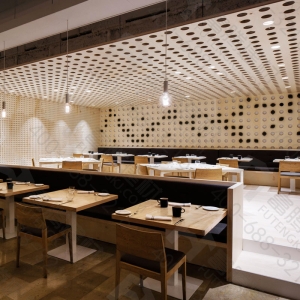In the field of architectural decoration, aluminum veneer, as a new type of decorative material, is highly respected for its superior performance and beautiful appearance. Understanding the common width specifications of aluminum veneer is essential for selecting and customizing high-quality products. The width of aluminum veneer is usually customized according to the specific needs of the construction project, but there are also some common specifications on the market that can meet the design requirements of most buildings.
Generally speaking, the width of aluminum veneer mainly has the following common specifications: 600mm, 800mm, 1000mm, 1200mm, 1500mm and 1800mm. These specifications can cover different needs from small interior decoration to large building curtain walls. For architectural designers and purchasers, choosing the right width specification is not only related to the installation effect, but also affects the overall decoration effect and cost control.
The 600mm aluminum veneer specification is usually suitable for small area decoration, such as wall embellishment or local decoration in a specific area. Its small size and easy installation make it the first choice for many commercial spaces. The specifications of 800mm to 1200mm are more suitable for large-area wall covering or ceiling decoration. This specification can visually bring a spacious and bright feeling, which is very suitable for modern architectural design.
When it comes to large public buildings or commercial complexes, the width specifications of 1500mm and 1800mm are particularly suitable. This kind of wide aluminum veneer can show an overall unified visual effect in large-area curtain wall decoration, reduce seams and improve aesthetics. At the same time, these specifications are also more structurally stable and can better resist the influence of the external natural environment.
However, for those architectural projects that pursue individuality and unique style, customized width aluminum veneer is a good choice. According to the actual needs of the project, customizing the appropriate width can maximize the unique style of the building without destroying the overall design sense. In addition, customized width can also better save materials and reduce construction costs.
When choosing the width specification of aluminum veneer, the thickness of the plate also needs to be considered. Generally speaking, the greater the thickness, the stronger the rigidity of the aluminum veneer and the better the flatness, which means that it can better adapt to the use needs of various environments. However, it should be noted that the thickness and width of the plate need to be reasonably matched to achieve the best decorative effect.
If you have questions about the width specifications when purchasing aluminum veneers, it is recommended to contact a professional aluminum veneer manufacturer. They can usually provide professional advice based on your project requirements and customize the most suitable width specifications for you to ensure that the final decorative effect meets expectations. At the same time, these manufacturers are often able to provide one-stop services, from material selection to installation, to help you easily achieve your project goals.
Whether you choose common specifications on the market or customize your own aluminum veneer width, mastering the key points of specification selection is the key to ensuring the smooth progress of the project. I hope that by understanding the width specifications of aluminum veneers, you can make the best choice and add a unique beauty and value to your construction project.
 扫一扫 加微信好友了解更多
扫一扫 加微信好友了解更多




No. 3, Miaozikou Industrial Park, Shilou Town, Panyu District, Guangzhou.
400-688-3216
info@futengkj.com


